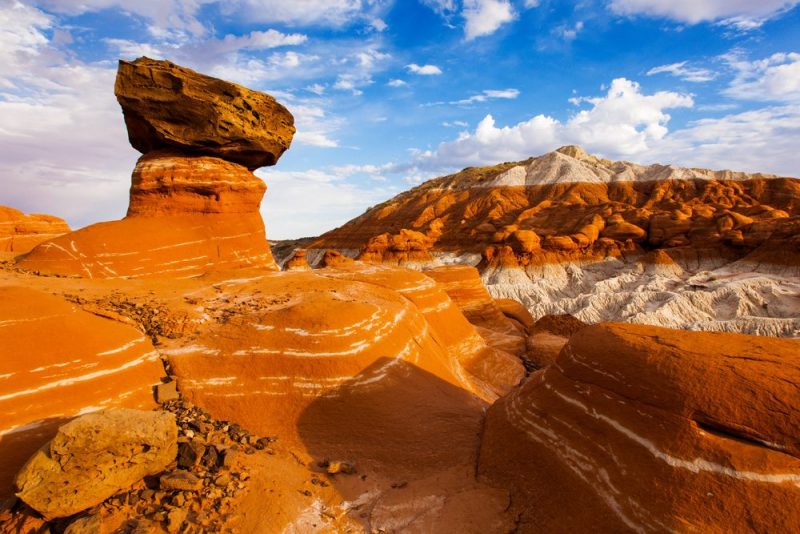A recent executive order calls for the “review” of dozens of national monuments, opening them to the risk of drilling, mining, and fracking.
In the fall of 2002, I spent nearly two weeks backpacking in Grand Staircase-Escalante National Monument in southern Utah. Fifteen years later, that experience continues to have a lasting impact on me.
Words simply cannot describe the beauty of the red rock sculpted by creeks running through the gulches, or the smell of sage that hovers above the ground as the sun coming over the cliffs warms the morning air. My stomach still drops when I think about inching toward the edge of a cliff on my belly to look down on a valley of cottonwood trees hundreds of feet below. I could feel the air rush up the cliff wall to my face as I watched a raven ascend with its wings outstretched, floating on the breeze toward me.
Grand Staircase-Escalante was designated a national monument for its unique and beautiful landscape and its important place in human history, which started at least 13,000 years ago and includes the legacy of hunter-gatherer communities and farming Ancestral Puebloans. After witnessing its beauty for myself and learning what it means for Indigenous history in the region, I’m angered by the thought of opening it — and any of our other national monuments — up to the highest bidder for fossil fuel development.
But that’s what the Trump administration — or to be more accurate, the fossil fuel industry via the Trump administration — proposed to do in an executive order issued in late April.
In the meantime, and not surprisingly, Americans from all walks of life and political stripes have responded with a resounding “no”. Environmental groups, tribes and Indigenous organizations, hunting and fishing recreation and industry groups, the outdoor retail sector, and tourism-based businesses that surround the national monuments have all expressed their frustration and concern about the review and the threat it poses to our public lands and waters.
Additionally, the legality of a president using the Antiquities Act to alter or rescind previous monument designations is increasingly questioned by legal experts and will certainly be challenged in court.
So, where do things stand now?
Trump’s executive order ordered the Department of Interior to conduct a 120-day review of 27 national monuments designated in the last 20 years. We know that several of these monuments have significant or potential oil, gas, and coal reserves underneath them.
Not only that, it singled out Bears Ears National Monument in Utah for a special 45-day review.That review included a public comment period that elicited hundreds of thousands of comments, most in favor of keeping Bears Ears as is. Importantly, the Bears Ears Inter-Tribal Coalition, the consortium of five tribes that co-manages the monument with the Bureau of Land Management and the Forest Service, condemned the recommendation.
Despite this, Interior Secretary Ryan Zinke released an interim report after the 45-day review that recommended reducing Bears Ears National Monument. No new boundary lines have been proposed yet.
The public comment period for the entire review ends July 10. More than 1 million comments have already been submitted and hundreds of thousands more are expected. Submit yours now and ask a friend to do the same.
We need to defend the values that are at the core of our national monuments. These values celebrate special places of natural beauty and cultural significance, protect them from the short-sighted interests of industry and industry-influenced politicians, and leave them for future generations to cherish as we do.



